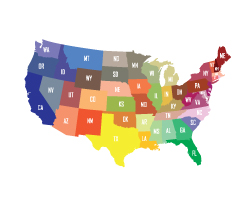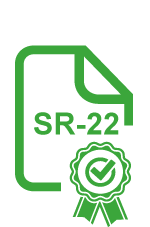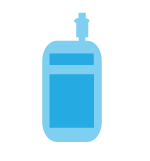By the time they reach the eighth grade, nearly 50 percent of adolescents have had at least one drink, and over 20 percent report having been “drunk”. Approximately 20 percent of 8th graders and almost 50 percent of 12th graders have consumed alcohol within the past 30 days. Among 12th graders, almost 30 percent report drinking on 3 or more occasions per month. Approximately 30 percent of 12th graders engage in heavy episodic drinking, now popularly termed “binge” drinking – that is, having at least five or more drinks on one occasion within the past 2 weeks – and it is estimated that 20 percent do so on more than one occasion.
Apart from being illegal, underage drinking poses a high risk to both the individual and society. For example, the rate of alcohol-related traffic crashes is greater for drivers ages 16 to 20 than for drivers age 21 and older. Adolescents also are vulnerable to alcohol-induced brain damage, which could contribute to poor performance at school or work. In addition, youthful drinking is associated with an increased likelihood of developing alcohol abuse or dependence later in life. Early intervention is essential to prevent the development of serious alcohol problems among youth between the ages of 12 and 20. This article describes some of the most harmful consequences of underage drinking as well as prevention and treatment approaches that can be applied successfully to meet the unique needs of this age group.
Alcohol’s Effects on the Brain
Adolescence is the transition between childhood and adulthood. During this time, significant changes occur in the body, including rapid hormonal alterations and the formation of new networks in the brain. Adolescence is also a time of trying new experiences and activities that emphasize socializing with peers and conforming to peer–group standards. These new activities may place young people at particular risk for initiating and continuing alcohol consumption. Exposing the brain to alcohol during this period may interrupt key processes of brain development, possibly leading to mild cognitive impairment as well as to further escalation of drinking.
Subtle alcohol-induced adolescent learning impairments could affect academic and occupational achievement. In one study, Brown and colleagues evaluated short–term memory skills in alcohol-dependent and non-dependent adolescents ages 15 to 16. The alcohol-dependent youth had greater difficulty remembering words and simple geometric designs after a 10–minute interval. In this and similar studies, memory problems were most common among adolescents in treatment who had experienced alcohol withdrawal symptoms. The emergence of withdrawal symptoms generally indicates an established pattern of heavy drinking. Their appearance at a young age underscores the need for early intervention to prevent and treat underage drinking.
Although the prevalence of high–risk drinking declines after early adulthood, alcohol-induced brain damage may persist. Memory impairment has been found in adult rats exposed to alcohol during adolescence. In addition, sophisticated imaging techniques revealed structural differences in the brains of 17–year–old adolescents who displayed alcohol-induced intellectual and behavioral impairment. Specifically, the hippocampus—a part of the brain important for learning and memory was smaller in alcohol-dependent study participants than it was in non-dependent participants. Adolescents who began drinking at an earlier age had proportionately smaller hippocampus volumes compared with those who began later, suggesting that the differences in size were alcohol-induced.
The Link Between Early Alcohol Use and Alcohol Dependence
Early alcohol use may have long-lasting consequences. People who begin drinking before age 15 are four times more likely to develop alcohol dependence at some time in their lives compared with those who have their first drink at age 20 or older. It is not clear whether starting to drink at an early age actually causes alcoholism or whether it simply indicates an existing vulnerability to alcohol use disorders. For example, both early drinking and alcoholism have been linked to personality characteristics such as strong tendencies to act impulsively and to seek out new experiences and sensations. Some evidence indicates that genetic factors may contribute to the relationship between early drinking and subsequent alcoholism. Environmental factors may also be involved, especially in alcoholic families, where children may start drinking earlier because of easier access to alcohol in the home, family acceptance of drinking, and lack of parental monitoring.
Prevention and Treatment
The immediate and long–term risks associated with adolescent alcohol use underscore the need for effective prevention and treatment programs. Research on the personal, social, and environmental factors that contribute to the initiation and escalation of drinking is essential for the development of such programs. It should be noted that preventing and identifying alcohol use disorders in youth require different screening, assessment, and treatment approaches than those used for adults. For example, although relapse rates following alcoholism treatment are similar for both adults and adolescents, social factors such as peer pressure play a much larger role in relapse among adolescents.
Personal factors such as childhood behavior problems or a family history of alcohol use disorders can help to identify high–risk youth and may suggest a direction for interventions. Evidence suggests that the most reliable predictor of a youth’s drinking behavior is the drinking behavior of his or her friends. Many research-based interventions target the child’s relevant behavioral skills, such as his or her ability to react appropriately to peer pressure to drink, as well as his or her knowledge, attitudes, and intentions regarding alcohol use. Positive beliefs about alcohol’s effects and the social acceptability of drinking encourage the adolescent to begin and continue drinking. However, youth often overestimate how much their peers drink and how positive their peers’ attitudes are toward drinking. Consequently, most prevention programs include social norms education, which uses survey data to counter students’ misperceptions of their peers’ drinking practices and attitudes about alcohol.
Family factors, such as parent-child relationships, discipline methods, communication, monitoring and supervision, and parental involvement, also exert a significant influence on youthful alcohol use. Accordingly, family-based prevention programs for youth have been a developed-for example, Iowa’s Strengthening Families Program, which significantly delayed initiation of alcohol use by improving parenting skills and family bonding. The beneficial effects of this program on student alcohol involvement were still evident 4 years after the intervention.
Some school-based programs are aimed at adolescents who have already begun drinking. Preliminary research also has found promise in high school-based motivational programs that encourage self–change in problem drinkers.
Source: National Institute on Alcohol Abuse and Alcoholism
Injury and Social Consequences
Underage alcohol use is more likely to kill young people than all illegal drugs combined. Some of the most serious and widespread alcohol-related problems among adolescents are discussed below. For a more detailed discussion of alcohol problems in the college-age population, see Changing the Culture of Campus Drinking.
Drinking and Driving. Motor vehicle crashes are the leading cause of death among youth ages 15 to 20. Adolescents already are at increased risk through their relative lack of driving experience, and drivers younger than 21 are more susceptible than older drivers to the alcohol-induced impairment of driving skills. The rate of fatal crashes among alcohol-involved drivers between 16 and 20 years old is more than twice the rate for alcohol-involved drivers 21 and older.
Suicide. Alcohol use interacts with conditions such as depression and stress to contribute to suicide, the third leading cause of death among people between the ages of 14 and 25. In one study, 37 percent of eighth-grade females who drank heavily reported attempting suicide, compared with 11 percent who did not drink.
Sexual Assault. Sexual assault, including rape, occurs most commonly among women in late adolescence and early adulthood, usually within the context of a date. In one survey, approximately 10 percent of female high school students reported having been raped. Research suggests that alcohol use by the offender, the victim, or both, increases the likelihood of sexual assault by a male acquaintance.
High–Risk Sex. Research has associated adolescent alcohol use with high–risk sex (for example, having multiple sexual partners and failing to use condoms). The consequences of high–risk sex also are common in this age group, particularly unwanted pregnancy and sexually transmitted diseases, including HIV/AIDS. According to a recent study, the link between high–risk sex and drinking is affected by the quantity of alcohol consumed. The probability of sexual intercourse is increased by drinking amounts of alcohol sufficient to impair judgment but decreased by drinking heavier amounts that result in feelings of nausea, passing out, or mental confusion.







